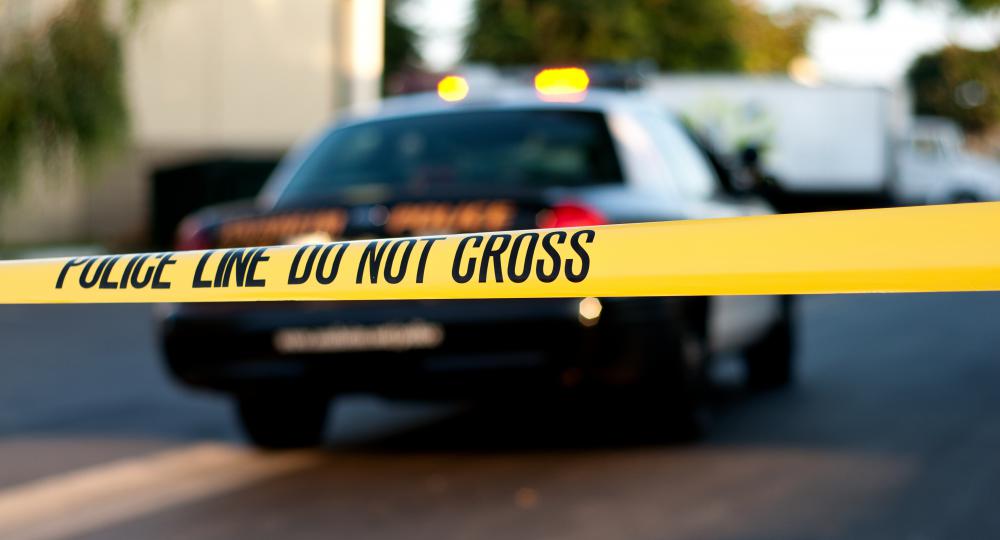At MyLawQuestions, we're committed to delivering accurate, trustworthy information. Our expert-authored content is rigorously fact-checked and sourced from credible authorities. Discover how we uphold the highest standards in providing you with reliable knowledge.
What is Class Evidence?
Class evidence is material in a criminal investigation that can be linked with a group of people, but not a specific individual. This type of evidence may be used to narrow down a list of possible suspects. In combination with other evidence in a case, it can demonstrate that a limited number of people had all of the characteristics associated with evidence left by a perpetrator. This is in contrast with individual evidence, which is materials that are linked to a particular person.
When investigators arrive on a scene, they collect as much evidence as possible so they can gather information about a case and, ultimately, build a case for court. This includes taking note of anything unusual or anything that could be used for identification. A common example of class evidence found at crime scenes is impression marks such as footprints, tire marks, or marks left by tools.

This evidence can help investigators pinpoint a brand or type of product involved in a crime. This can be used to learn more about who would be a likely candidate as a suspect. Sometimes, class evidence can become individual evidence. For instance, shoes and tires both develop unique wear patterns over time. Investigators can inspect the evidence closely to see if there are tell-tale signs of wear that could be used to link a particular person to a crime scene, rather than any person meeting a rough series of parameters.

In investigations, class evidence can be very valuable. It helps investigators quickly narrow down a list of potential suspects by excluding people who do not meet the parameters set by the evidence. The more quickly a suspect is identified, the more likely it is that additional evidence can be uncovered. This evidence can be used to confirm that a suspect is probably behind the crime so that a successful prosecution can occur in court.
Individual evidence is stronger in court, but class evidence can still be useful. It can be used to show how investigators developed lists of likely suspects. Sometimes a combination of class evidence can be quite compelling for a jury as well, by showing that there are very few people who satisfy characteristics determined by multiple pieces of evidence. People who are accused are permitted to examine class evidence and to bring in experts of their own to testify about the evidence, its validity, and its applicability to the case in question.
AS FEATURED ON:
AS FEATURED ON:












Discussion Comments
@Mammmood - Your case seems to have narrowed down the list of prospects for sure, but I can understand how the defense would have raised a slew of evidence objections.
It’s quite possible that other people wore those jackets or shirts or drew that graffiti, not necessarily the gang members. Perhaps they were “wannabe” gang members or criminals who wanted to throw off the police in their hunt for the true suspect, and used those fake clues to deflect attention away to the gang.
In either case, I agree with the article that it’s not easy to prosecute on the basis of class evidence alone. Even DNA evidence, from what I understand, rarely results in a prosecution in the majority of the cases.
Alas, real life court room drama is nothing compared to what they show on television.
I immediately think of gang violence when I read this article about class evidence, because we have too much of it in parts of the city where I live, unfortunately.
I imagine a crime scene where the tell tale marks of a particular gang are left on the scene, like graffiti markings or sweatshirts left behind which have gang related symbols on them. Perhaps certain shoes are peculiar to particular gangs too, I don’t know.
This type of evidence collection is useful to narrow down the list of suspects, but it does not always lead to the conviction of one particular individual.
I served on a jury once where gang members had been implicated as likely suspects in a crime. They focused on one person, however, and they could never really prove beyond a reasonable doubt that he did it. So he got off free.
@starrynight - That's funny about the shoes. Like the article mentioned, they can do the same thing with tire tracks.
I'm glad that for court, you need a little bit more than class evidence to convict someone. It does sound useful, because it narrows down the list of suspects. However, sometimes for certain evidence, a lot of people can be in the "class." It sounds like a great starting point though.
I enjoy watching crime shows on TV, and I'm always amazed at how they catch the criminal with the evidence they have.
I remember watching one show not too long ago where they used footprints to help narrow down suspects. The footprint happened to be from a limited edition shoe, so that narrowed down the group of possible suspects and it was class evidence.
Then when they explored the people who actually had access to the area the murder took place and had the shoes, their list was narrowed down to one!
So I guess the lesson here is, if you want to commit a crime, wear generic shoes. Just kidding!
Post your comments